MBIDP Rotation Labs 2022-23
Please explore the list of MBIDP labs that are accepting rotation students in the 2022-23 academic year.
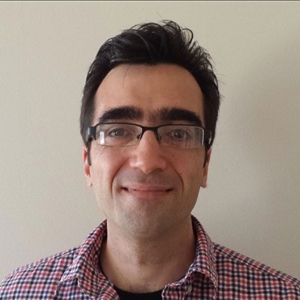
Orkun Akin
Research Interests
What makes brains and neurons so compelling to look at is their astonishingly intricate organization. The grand challenge of developmental neurobiology is to understand how the information in the genome is used to build such a stereotyped, complex structure. This challenge has been taken up in many model organisms and for different stages of neuronal development: profileration, differentiation, axon guidance, and synapse formation. In the fruit fly, the workhorse of classic genetic analysis, we discovered a new epoch in brain development that was previously unknown for invertebrate biology. Using 2-photon imaging, we found that soon after most axon guidance events are completed and co-incident with the onset of synapse formation, neurons in the developing brain begin to show coordinated, periodic bursts of electrical activity. In the visual system, this activity is independent of sensory stimulation (i.e. the fly cannot see yet), lasts for two days until the adult emerges from its pupa, and is cell-type specific. That is, the pattern of activity is distinct for each defined cell type but similar for neurons that are synaptic partners in the adult. Notably, stimulus-independent neuronal activity in the developing vertebrate brain has been observed and studied in the past three decades; the discovery of a comparable phenomenon in an invertebrate suggests that this is a general feature of the assembly of complex brains. We are now asking where the activity is coming from, how it is organized and coordinated across the brain, and how it is contributing to brain development. The remarkable toolkit available in the fly visual system, from the complete connectome to the ability to monitor and manipulate individual neurons, provides an extraordinary opportunity address these questions.

Valerie Arboleda
Research Interests
Our research lab is broadly interested in leveraging genomic tools to understanding how both rare and common human genetic variation cause human disease. As the sequencing technology as matured, one of the major challenge in genomics is interpretation of the majority of the DNA base pairs that are sequenced within an individual. Interpreting how the DNA code influences human disease and is an important next step in integration of research findings into the clinical setting. The lab leverages a bidirectional approach. First, we are interested in rare genetic syndromes caused by genetic changes in genes that function to organize DNA through chromatin modification. The lab leverages functional genomic approaches (RNA-seq, ChIP-seq, methylation-seq) to 1) understand how rare deleterious mutations in chromatin modifiers affect downstream pathways and human development in a cellular model system, 2) identify modifiers of disease severity and 3) prioritize putative drug targets. Second, we are also interested in the shared genetic basis of monogenic and complex diseases. We are using existing large scale GWAS data sets to better identify and interpret findings by leveraging the extremes of the phenotypic spectrum (monogenic/Mendelian disease).
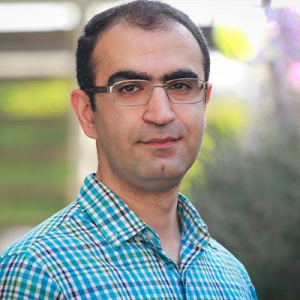
Amjad Askary
Research Interests
As an embryo develops, it needs to generate a myriad of cell types, all in specific locations relative to each other and with correct abundances. Retina, for example, contains more than a hundred neuronal subtypes, organized into three layers of cell bodies and two layers of neuropil. These cell types have different features and frequencies and have to be tiled across the retina in a specific way to support the overall function of the tissue. This seemingly impossible task is accomplished during development with incredible robustness. All the instructions for making this intricate structure, as well as all the other tissues in the body, has to be encoded in the genome. So we hypothesize that the blueprints for making tissues like retina are compressible and involve relatively simple principles. Our goal is to identify these principles and utilize them to develop new therapeutic strategies for neurodegenerative disorders. Our approach involves imaging based genetic barcoding for tracing the lineage and molecular history of individual cells, spatial transcriptomics for mapping cell states, computational modeling for interpreting the results, and synthetic biology for developing molecular tools to manipulate cell fate decisions.

Keriann Backus
Research Interests
The Backus Lab is a young chemical biology research group at UCLA. We investigate how protein function and cellular fate can be studied and manipulated by chemical probes. By developing new methods that combine chemical biology, genomics, and proteomics, we aim to identify functional, disease-linked, and probe-accessible pockets in human proteins. Current applications of our methods include: (i) the production of probes to alter protein interactions, (ii) precision anti-cancer probes, and (iii) probes that enhance T cell proliferation.

Aparna Bhaduri
Research Interests
At UCLA, the Bhaduri Lab studies neural stem cell fate specification in the context of normal human cortical development and in brain tumors. The lab uses a combination of cortical organoids, tumor cell lines, and primary patient tumors to explore the emergence of heterogeneous cell types and to understand the role of the progenitor populations in cortical development and cancer. To ask these questions, the Bhaduri Lab continues to implement single-cell approaches, including to explore the transcriptome, epigenome, and metabolites.
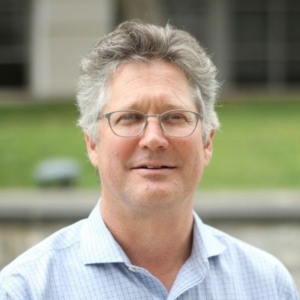
Douglas Black
Research Interests
Our lab is interested in the regulation of pre-mRNA splicing and the biochemical mechanisms that control changes in splice sites. The sequences of metazoan genomes, with their relatively low gene numbers, have highlighted the question of how protein number can be expanded beyond the gene number for a complex organism. Alternative splicing, which allows the production of multiple mRNAs and hence multiple proteins from a single gene, is a major contributor to protein diversity. However, despite its key role in gene expression, this process is poorly understood mechanistically.

Peter Bradley
Research Interests
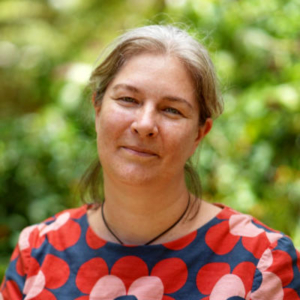
Samantha Butler
Research Interests
The extraordinarily diverse functions of the nervous system, from cognition to movement, are possible because neurons are assembled into precisely ordered networks that permit them to rapidly and accurately communicate with their synaptic targets.
The Butler laboratory seeks to understand the mechanisms that establish these neuronal networks during development with the long-term goal of determining how this process may be co-opted to regenerate diseased or damaged circuits. Working the developing spinal cord, we have shown that molecules previously identified as morphogens, such as the Bone Morphogenetic Proteins (BMPs) family of growth factors, can also act as axon guidance signals.
We are now determining the key intrinsic factors that translate the ability of the BMPs to direct cell fate and axon guidance decisions, two strikingly different processes in the generation of neural circuits. During the course of these studies, we have identified a critical mechanism by which the rate of axon outgrowth is controlled during embryogenesis, thereby permitting neural circuits to develop in synchrony with the rest of the embryo.
The Butler laboratory is currently assessing how this mechanism can be harnessed to accelerate the regeneration of injured peripheral nerves. The successful implementation of this technology could result in significantly improved recovery times for patients with damaged nervous systems.
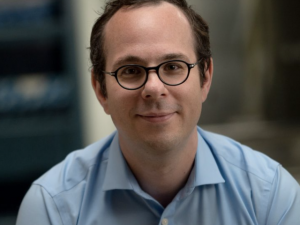
Paul Boutros
Research Interests
Our passion is cancer research. Not just cancer research into furthering our knowledge of this terrible disease: we are absolutely committed to changing clinical practice by developing highly personalized forms of treatment. Using computational techniques, we analyze very large datasets containing billions of data points to create clinically useful diagnostics that personalize therapy. As “Big Data” researchers, we both apply existing techniques and continuously work to improve them and create new methods. We hope to influence and facilitate the next generation of researchers, who will use these techniques to cure cancer and improve human health and well-being in ways we can’t imagine today! Much of our work to date has focused on prostate cancer, but we are increasingly applying the same techniques to cancers of the kidney, bladder and other sites, and discovering fascinating commonalities across them.
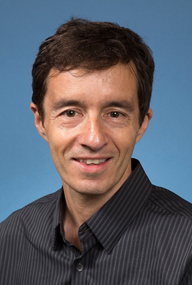
Guillaume Chanfreau
Research Interests
We are interested in how eukaryotic cells regulate their gene expression programs, focusing most particularly on the post-transcriptional steps. A first research topic in the laboratory is focused on the study the the S.cerevisiae homolog of RNase III, a model enzyme to understand the function of a double-stranded RNA endonuclease in the biology of eukaryotic cells. We have shown that this enzyme is implicated in the processing of a large number of non coding RNAs, as well as in the surveillance of many mRNAs, including some controlling iron uptake. Genomic studies are being performed to understand the genomic targets of this enzyme as well as other ribonucleases. A second research topic is focused on the biogenesis of small nucleolar ribonucleoprotein particles (snoRNPs). Box H/ACA snoRNPs are crucial molecules in the metabolism of ribosomal RNA, and this class of snoRNPs has gained widespread interest since it was discovered that mutations within H/ACA snoRNP components lead to the genetic disease dyskeratosis congenita. We have discovered a novel complex of two yeast proteins that are required for the biogenesis of box H/ACA snoRNPs. Our current work is focused on elucidating the mechanisms by which these proteins promote the assembly of the snoRNP.

Hua Linda Cai
Research Interests
The Cai laboratory has long-term interests in molecular regulation of the cardiovascular protective enyzme endothelial nitric oxide synthase (eNOS), and contributions to cardiovascular diseases of increased reactive oxygen species production (ROS). ROS are a family of oxygen-derived molecules that are highly reactive to directly cause protein or DNA damage, or activate signal transduction pathways that are essential in disease initiation or progression. For example, one electron reduction of molecular oxygen results in formation of superoxide anion, which can ultra rapidly react with nitric oxide to result in formation of a more toxic oxidant peroxynitrite, and a loss in nitric oxide bioavailability and nitric oxide-dependent vasodilatation, as well as nitric oxide-dependent anti-inflammatory and anti-atherosclerotic functions. The goal of our research is to delineate details of eNOS regulation under oxidant stress environment, which may lead to novel therapeutics targeting an array of cardiovascular disorders including hypertension, atherosclerosis, diabetic vascular diseases, heart failure and biological process of aging. In deed, in the past few years our lab has discovered and characterized novel mechanisms whereby eNOS is dysfunctionally regulated to generate ROS itself, deteriorating oxidant stress [Proc Natl Acad Sci U S A. Track II (2005) 102(25):9056-61; Diabetes (2007) Jan 56(1):118-126; Am. J. Physiol. Heart Circ. Physiol. (2009) Jul;297(1):H331-9; J. Mol Cell Cardiol. (2009)]. Based on these findings are currently testing novel therapeutics in mouse models of hypertension and diabetes. These regiments are anticipated to restore eNOS function to hinder disease progression. Another major direction of research in our laboratory is to identify innovative pathways of vascular repair. Endothelium is the thin lay of endothelial cells lining the luminal surface of blood vessels. It represents the first line of defense protecting the blood vessels against blood-borne insults such as hormones (i.e. elevated angiotensin II in hypertensive patients), disturbed flow and inflammatory cytokines (released by inflammatory cells). Additionally, endothelium can be physically damaged during catheterization or endovascular surgeries. Without intact endothelium, the rest of the blood vessels can be damaged to cause severe vascular disorders. Thus our goal has been to identify and characterize novel vascular repair mechanisms that can lead to enhanced endothelial cell proliferation and migration, as well as accelerated wound closure. Some of the findings have been published in prestigious journals [Proc Natl Acad Sci U S A. (2006) Track II, Apr 25;103(17):6530-5; Circulation Research (2009);104:50-59] Our group is also interested in novel pathways mediating nitric oxide-dependent cardioprotection. We have recently shown that netrin-1 potently protects the heart from ischemia/reperfusion induced myocardial infarction via activation of DCC/NO/ERK1/2/eNOS/DCC feed-forward mechanism [J. Mol Cell Cardiol. (2010)]. We have projects ongoing to also investigate oxidant stress mechanisms in human atrial fibrillation, the most common cardiac arrhythmia; a role of vascular oxidative stress in obesity; and novel therapeutics eliminating cardiovascular side effects of cancer drugs.

Irene Chen
Research Interests
The Chen Lab studies life-like biochemical systems to understand their fundamental properties and address emerging challenges in biotechnology and infectious disease. Our focus is biomolecular design and evolution in two nanoscale systems: simple synthetic cells and bacteriophages (phages).

Quen Cheng
Research Interests
Our research is motivated by the way infectious diseases can cause wildly different outcomes in different people. One of the factors that determines infection severity is what happened in the past – the history of the immune cells that are the front-line defense against the infection. In other words, for immune cells, the past shapes the present. This is similar to how the human response to a given stimulus might differ depending on what had previously happened to us that day. If someone cuts us off on the freeway, we are much more likely to forgive the offense if we are coming back from a relaxing day at the beach than if we are coming off a stressful overnight work shift! Immune cells are no different. Context matters. The past shapes the response to present stimuli.
How past exposures reprogram cells of the innate immune system is known as “trained immunity.” Our research examines the molecular mechanisms of trained immunity and how it contributes to the variable outcomes of infections. We are particularly interested in the mechanisms by which the epigenome of macrophages are reprogrammed by past exposures. How do different ligands produce different epigenomic reprogramming signatures? How do chronic diseases like diabetes alter the epigenetic state of innate immune cells? Our hope is that by better understanding how trained immunity works we will be able to predict which patients are at risk for severe infections and provide our own “training” of the immune system to improve human health.

Amander Clark
Research Interests
Our overall goal is to understand the cell and molecular basis of germline differentiation and epigenetic reprogramming. My laboratory uses CRISPR/Cas9 gene editing technologies, next generation sequencing, pluripotent stem cells and mouse modeling to achieve this goal. Results from our work will provide a biological understanding of the cell and molecular basis of human life and child health, and potentially the foundation for a cell based therapy to overcome human infertility.

Robert Clubb
Research Interests
Our overall goal is to understand the cell and molecular basis of germline differentiation and epigenetic reprogramming. My laboratory uses CRISPR/Cas9 gene editing technologies, next generation sequencing, pluripotent stem cells and mouse modeling to achieve this goal. Results from our work will provide a biological understanding of the cell and molecular basis of human life and child health, and potentially the foundation for a cell based therapy to overcome human infertility.

Hilary Coller
Research Interests
Our laboratory’s mission is to apply modern approaches drawn from molecular and cellular biology, genomics, biochemistry, computer science and systems biology, chemistry and medicine to gain an insight into the molecular basis of quiescence, and thereby cell cycle control and cancer.

Anthony Covarrubias
Research Interests
We explore:
-
Investigate the role of NAD metabolism as a therapeutic target in metabolic disease, aging, and cancer: Nicotinamide adenine dinucleotide (NAD) is a redox coenzyme central to energy metabolism and an essential cofactor for non-redox NAD dependent enzymes including sirtuins and poly-ADP-ribose polymerases (PARPs). Recently, lower NAD levels have also been linked to multiple disease states including metabolic disease, cancer, and in aging tissues in both rodents and human patients. Thus, the Covarrubias will explore how NAD consuming and biosynthetic pathways are altered during these disease states, the biological mechanisms in which altered NAD levels impact metabolism, gene expression and cell biology, and explore NAD metabolism as a potential therapeutic target.
-
Exploring the role of nutrient/metabolite levels and nutrient sensing pathways in the regulation of immune cell function: Dr. Covarrubias has made key discoveries showing how metabolite levels are sensed via nutrient sensing signaling pathways, such the Akt-mTOR pathway, to influence macrophage gene expression and inflammatory functions during obesity and lean condition. Conversely, Dr. Covarrubias has shown how macrophage-derived inflammation can influences tissue levels of the critical metabolites including NAD during aging. Thus, the Covarrubias Lab will continue to explore the crosstalk and integration between nutrient/metabolite levels, nutrient sensing signaling pathways, gene expression and immune cell function.
• Immune cell and senescent cell crosstalk in metabolic disease, aging, and cancer: The Covarrubias Lab hopes to build on the discovery that senescent cells directly influence the function of tissue-resident macrophages via the secretion of the SASP by senescent cells. For example, Dr. Covarrubias showed that exposure to SASP causes macrophages to proliferate, polarize to a pro-inflammatory M1-like state, and alter their metabolism. Thus, the Covarrubias Lab will continue to further characterize and explore how senescent cells influence macrophage biology and aging.

Rachelle Crosbie
Research Interests
My research program focuses on determining the pathogenetic mechanisms of muscular dystrophy. Members of the lab are examining the muscle function using biochemical, molecular, and cellular approaches. There are many forms of muscular dystrophy caused by primary genetic mutations within different muscle genes. For instance, mutations in dystrophin are responsible for causing Duchenne muscular dystrophy (DMD) while mutations in any of the four sarcoglycan genes cause limb-girdle muscular dystrophy. Congenital and Emery-Dreyfus muscular dystrophies are caused by mutations in laminin and emerin, respectively. These muscle diseases differ based on the types of muscles that are affected, clinical progress of the disease, and mode of inheritance. My lab is interested in 1) determining why these proteins are critical for normal muscle function 2) creating animal models for specific forms of muscular dystrophy using transgenic and knockout mouse technology and 3) developing new therapeutic agents. We are in the process of testing FDA-approved compounds in mouse models of muscular dystrophy. In addition, we are developing novel animal models for muscle proteins that are known to rescue muscular dystrophy.
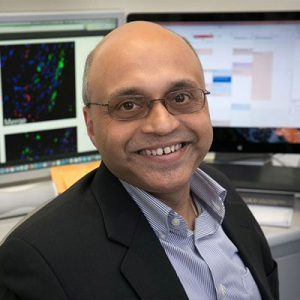
Arjun Deb
Research Interests
Our laboratory investigates molecular mechanisms driving tissue repair and regeneration especially in the heart. We examine mechanisms of wound healing and how the extracellular matrix, heart muscle cells and scar forming cells (fibroblasts) heart interact and regulate an acute or chronic injury response. The goal of our research is to enhance heart repair and regeneration after heart attacks. We adopt genetic, pharmacologic and physiologic approaches and use murine models as well as human tissue to address our questions. Our goal is to identify novel therapeutic approaches for enhancing repair of the heart and other tissues following injury.
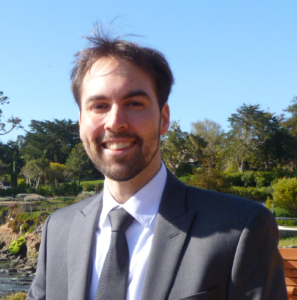
Luis de la Torre-Ubieta
Research Interests

Sophie Deng
Research Interests
Dr. Deng’s research focuses on improving the current treatments for patients with limbal stem cell deficiency. To achieve this goal, her laboratory investigates the microenvironment/niche of the limbal stem cells to elucidate those factors that govern the fate of limbal stem cells. Potential components of the limbal stem cell niche have been identified and their roles in the regulation of limbal stem cell self-renewal and differentiation are being investigated. Two such regulatory pathways are Wnt and Notch signaling. The findings will be used to optimized the ex vivo expansion of limbal stem cells for transplantation by modulating those factors that regulate the differentiation and proliferation of limbal stem cells. Dr. Sophie Deng’s clinical research focuses on the development of new methods to diagnose and classify limbal stem cell deficiency using new molecular biomarkers and in vivo live imaging modalities.
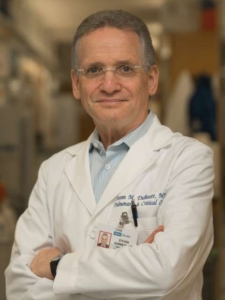
Steven Dubinett
Research Interests
Dr. Dubinett conducts translational research in the immunobiology of lung cancer. Building on original discoveries regarding inflammation in human non-small cell lung cancer (NSCLC), he has developed a translational research program, which now utilizes these laboratory-based studies in the laboratory and clinical setting. His laboratory has identified inflammation-dependent genes and proteins mediating angiogenesis, apoptosis resistance, invasion and immune suppression in NSCLC. His studies focus on the microenvironment, inflammation and epithelial mesenchymal transition in the pathogenesis of lung cancer.

D'Juan Farmer
Research Interests
We study developmental mechanisms of organ formation and growth using the calvaria, the bony skeleton that comprise the top of the skull and encases the brain. Proper formation and growth of the calvaria is critical for the proper accommodation of the growing brain during embryonic and postnatal life. Sustained calvarial bone growth relies on fibrous joints called sutures, which simultaneously act as a barrier between neighboring bones and a source of stem cells to grow bones. In a common congenital abnormality called craniosynostosis, sutures are lost and neighboring bones prematurely fuse, limiting brain growth. In the Farmer lab, we integrate multiple animal models (i.e. mice and zebrafish) with cutting edge genomic, genetic and imaging technologies to decipher the molecular and cellular basis of calvaria development. Our primary questions in the lab seek to under how the skeletogenic and non-skeletogenic mesenchyme is specified, how cranial sutures are established, how calvarial bone and brain growth are coupled, and how disrupting these processes lead to craniofacial defects. These efforts will inform appropriate intervention for the various genetic mutations that cause craniosynostosis.

Juli Feigon
Research Interests
We study nucleic acid structure and specific recognition of nucleic acids by proteins. Our primary research tool is multidimensional nuclear magnetic resonance (NMR) spectroscopy. We also utilize a range of molecular biology, biochemical, and biophysical techniques including X-ray crystallography. These techniques are used to determine the three-dimensional structures of DNA and RNA, to investigate their interactions with various proteins and ligands, and to study nucleic acid folding. One major area of investigation involves structural and functional studies of nucleic acids and proteins involved in eukaryotic ribosome biogenesis and in trafficking through the nucleolus. Major proteins and RNAs which we are investigating are nucleolin and its interaction with pre-ribosomal RNA, yeast RNAse III, and box H/ACA snoRNPs, which are involved in pseudouridylation of sites on the rRNA. We are also interested in the structure of DNA telomeres and their synthesis by telomerase. We determined the first structure of a telomere repeat DNA and showed that it forms a four-stranded G-quadruplex structure. Our current work is focused on determining structures of sub-domains of the telomerase RNA, including the H/ACA box region which targets telomerase to the nucleolus or Cajal bodies, and their interaction with telomerase proteins. Another area of interest is in the interaction of non-sequence specific HMG box proteins with DNA. These proteins have been shown to play roles in DNA recombination, repair, activation and repression of transcription as well as nucleosome assembly and disassembly. We are investigating how the yeast HMG box protein NHP6A interacts with DNA and modulates the affects of the anticancer drug cis-platin. We are also investigating the interactions of the DNA nucleotide excision repair protein HHR23A with other cellular DNA repair proteins, the ubiquitin/proteosome pathway, and HIV-1 Vpr. Finally, we are interested in fundamental questions of nucleic acid folding and cation interactions. We are also involved in NMR methods development to augment our studies of nucleic acid structure and cation interactions.

Oliver Fregoso
Research Interests
HIV-1 is one of the most devastating viral pathogens in modern human history. Despite fervent research, it still presents a major burden to human health, particularly in underserved populations. HIV belongs to a family of viruses called lentiviruses that infect at least 40 primate species. The success of this family is due to its ability to adapt to the host environment and circumvent the innate immune responses. This is largely achieved through co-option of host proteins to function as pro-viral cofactors, as well as through direct antagonism of host anti-viral proteins. Our research focuses on elucidating viral-host interactions that regulate lentiviral replication and pathogenesis. Our goal is to identify important proteins involved in the lentiviral lifecycle, as well as to uncover the molecular constraints governing viral evolution and adaptation. We take a unique interdisciplinary approach to study these interactions by combining molecular virology, biochemistry, and evolutionary biology. By studying host genes from a diverse array of primates, as well as the viruses that specifically infect these primates, we are able to identify viral-host interactions that are necessary for lentiviral pathogenesis and adaptation to a new host.
A current focus of the lab is on understanding the role of the DNA damage response in the lentiviral lifecycle. Through our unbiased evolutionary approach, we have identified proteins canonically involved in the cells response to damaged DNA as important lentiviral factors. The overall goal of these studies is (a) to gain a mechanistic understanding of how viral accessory proteins modulate the DNA damage response, and (b) to describe uncharacterized host factors that regulate the lentiviral lifecycle. This is a largely unexplored interface of lentiviral and host biology. Understanding how and why lentiviruses engage the DNA damage response will shed light on both viral and host biology, and further help to expand our fight against HIV.

Andrew Goldstein
Research Interests
The research in the Goldstein laboratory is focused on the intersection between cancer biology, aging and metabolism with an emphasis on defining mechanisms that regulate prostate tumorigenesis. Prostate cancer is a leading cause of cancer and cancer-related deaths worldwide. A better understanding of prostate cancer initiation, progression and treatment-resistance is critical for developing new therapies to extend life and reduce deaths from prostate cancer. Dr. Goldstein and colleagues have worked to define progenitor cells in the mouse and human prostate and demonstrate that these progenitor cells are susceptible to oncogenic transformation (Science) and can initiate prostate cancer. Aging and chronic inflammation are risk factors for prostate cancer, but the mechanisms by which they increase disease risk has been poorly understood. The Goldstein lab has characterized inflammatory cells in the mouse and human prostate using mass cytometry (AJCEU), and found that luminal progenitor cells are expanded in regions of chronic inflammation (Cell Reports) and in the aging prostate (Cell Reports), suggesting that age and inflammation are associated with an increased population of progenitor cells at risk for transformation. As epithelial cells undergo aging and malignant transformation, they exhibit metabolic reprogramming to support changes in energy demands and a changing microenvironment. The Goldstein lab is investigating how these metabolic changes enable prostate cancer initiation and progression (Cancer & Metabolism).

Feng Guo
Research Interests
My research group is interested to understand how non-coding RNAs function by forming defined three-dimensional structures and by interacting with proteins. In particular, we are investigating how a class of small RNAs (called microRNA or miRNA) is processed in human. The projects will be investigated using X-ray crystallography, biochemistry and in vitro evolution methods. MiRNAs are involved in many important biological functions, and are emerged as a new class of oncogenes and tumor suppressors. They regulate the expression of many protein-coding genes by targeting their messenger RNAs (mRNAs) for degradation or translational repression. To become the short mature functional forms, the long primary transcripts (pri-miRNAs) need to be specifically recognized and cleaved by a series of cellular processing factors. The first step of this processing pathway involves two protein factors, Drosha (a ribonuclease III family member) and DGCR8 (an RNA binding protein). We are characterizing the RNA binding and cleavage properties of these proteins, in the hope to use the knowledge to improve the algorithms to predict new miRNA genes and to design gene knockdown technologies by mimicking pri-miRNA. We recently found surprisingly that DGCR8 is a heme-binding protein and heme is likely involved in the regulation of miRNA processing. Our findings have important implications to the biological functions of miRNAs and heme, and to the pathogenesis and therapies of diseases such as cancers and Alzheimer’s disease.

Elissa Hallem
Research Interests
Our research focuses on the sensory behaviors of parasitic and free-living nematodes, and lies at the interface of neurobiology and parasitology. The goals of our research are to understand how human-parasitic worms use sensory cues to locate hosts to infect, how sensory circuits of parasitic animals differ from those of free-living animals to enable parasitic behaviors, and how sensory microcircuits generate flexible outputs. We use the skin-penetrating gastrointestinal parasitic nematodes Strongyloides stercoralis and Strongyloides ratti, as well as the free-living nematode C. elegans, as model systems. S. stercoralis is a human parasite that infects ~600 million people worldwide. Our research addresses fundamental questions of sensory circuit function and evolution in the context of human parasitism. In addition, human-parasitic worms are a major cause of morbidity worldwide, and a better understanding of their sensory behaviors may enable the development of novel strategies for preventing or treating infections.
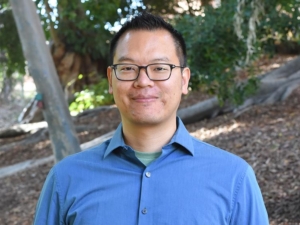
Jimmy Hu
Research Interests
A major focus of our lab is to understand how organs take their shapes. We seek to explore the genetic and signaling regulation that modulates cell behaviors and fates in order to generate correct tissue morphologies and cellular identities during development. One of our favourite subjects is the developing tooth, which begins its formation as a single layered epithelium and gradually undergoes a series of morphological changes, while interacting with the underlying mesenchyme. Our lab interrogates the genetic pathway, signaling control, and cell-cell adhesion that govern how this developing epithelium buckles, invaginates, turns, and forms in the appropriate size. While the tooth invaginates, several other craniofacial structures, such as the taste bud and the ear, bend upwards. We are fascinated by the developmental mechanisms that generate these morphological differences and we are employing techniques, such as single cell RNA-seq and live imaging in our studies.

Jing Huang
Research Interests
1. Longevity molecules that counteract aging and extend lifespan have long been a dream of humanity. Compared to ad libitum feeding, dietary restriction (DR) consistently extends lifespan and prevents age-related diseases. We discovered that a common metabolite, alpha-ketoglutarate (a-KG), acts as a direct molecular connection between dietary restriction and major aging regulatory proteins (Chin et al. 2014). Endogenous molecules such as a-KG that increase longevity suggest that an internal “fountain of youth” may exist that is accessible to interventions. Future research in this area offers enormous hopes and possibilities for better understanding of the molecular mechanisms of aging regulation, and for the prevention and treatment of age-related diseases, including major common killers such as cancer, heart disease, diabetes, and neurodegenerative diseases.
2. A second major area of interest in the lab is in technology and method development. Development of effective and safe therapies is the holy grail of medicine. For small-molecule drugs, a key challenge remains the identification of the molecular targets underlying drug therapeutic effects and/or adverse side effects. We have developed a simple, universally applicable target identification approach that analyzes direct drug binding to its target protein but does not require modification or immobilization of the small molecule (Lomenick et al. 2009). In this method, termed DARTS (drug affinity responsive target stability), small-molecule binding results in a pronounced and specific protection of its target protein from protease digestion. This specificity can be exploited to identify unknown binding targets of a small molecule with any cell lysate or protein mixture.

Oluwatayo Ikotun
Research Interests
Dr. Ikotun is Head of the Laboratory for Image Guided Immunotherapy where the research program focuses on developing molecular imaging tools for in vivo characterization of immune cell populations. By leveraging multimodal and multiplex nuclear imaging we aim to increase our basic understanding of the dynamic interplay between distinct immune cell populations during disease progression and monitor the impact of therapeutic intervention on these immune subtypes. We plan to utilize the knowledge gleaned to design next generation immunotherapies that strive to address the unmet medical needs of the 60-70 % of patients that remain unresponsive to current cancer immunotherapies. Our approach utilized targeted radio-immuno-therapeutics (TRIT), trifecta molecules comprised of a tumor targeting moiety, an immune co-stimulator/inhibitor, and radiation therapy. By employing this strategy, we intend to convert immunologically “cold” lesion into “hot” infiltrated and responsive masses. Diagnostic surrogates of each TRIT will enable us to take an image-guided approach to treatment planning, facilitate evaluation of tissue distribution, and identify on and off-target liabilities.
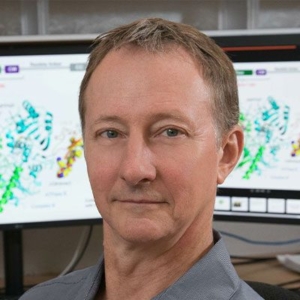
Steve Jacobsen
Research Interests
Our lab studies epigenetic gene regulation in plants and animals. The work focuses on modifications of chromatin including cytosine DNA methylation, histone modifications, and the role of non-coding RNAs in gene regulation. About 70% our effort is aimed at using Arabidopsis thaliana as a model genetic system to study how conserved epigenetic modifications function in gene silencing and activation. The other 30% is focused on mouse and human epigenetic regulation. Current efforts are aimed at understanding mechanisms of RNA directed DNA methylation, the action of the conserved MORC proteins in gene silencing processes in plants and animals, and antisilencing mechanisms that function to oppose silencing mechanisms. We also have a program focused on targeting various epigenetic modifications using CRISPR systems. The main approaches we use are genetic screens, genomics and bioinformatics, and biochemistry and structural biology.

Scott Kitchen
Research Interests
Dr. Kitchen’s research interests are focused on investigating the mechanisms that limit the human immune systems’ ability to clear chronic infections or malignancies and in developing ways that augment and enhance these responses. He is interested in the development of models that allow the characterization of human hematopoiesis and gene therapy based engineered immunity in vivo.
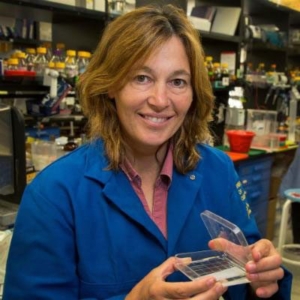
Carla Koehler
Research Interests
A basic question of cell biology is the mechanism by which a protein reaches its correct location within the cell. Of all the organelles in a mammalian cell, the mitochondrion is the most complex because two membranes must be crossed. In addition to the metabolic role, the mitochondria is a key player in many cellular processes including apoptosis, metal ion homeostasis and aging. My specific interests lie in mitochondrial biogenesis, particularly the mechanism by which proteins are imported into the mitochondrial inner membrane. Our laboratory uses a combined genetic and biochemical approach to understand this basic process in the model organism Saccharomyces cerevisae. But we have expanded into mammalian systems now with the identification of the molecular basis of a mitochondrial disease with symptoms of deafness, blindness, and movement disorders. This disease is caused by a defect in import of inner membrane proteins. Current studies continue in both mammalian and yeast systems. Our broad interests are to understand mitochondrial biogenesis and how it relates to cellular homeostasis.

Leonid Kruglyak
Research Interests
My lab is interested in the genetic basis of heritable traits. The genetic basis of most traits is complex, involving many genes that interact with each other and the environment. My lab conducts experiments in model organisms (the yeast Saccharomyces cerevisiae and the nematode worm Caenorhabditis elegans), as well as computational analyses, aimed at understanding how changes at the level of DNA are shaped by molecular and evolutionary forces, and how these changes lead to all the observable differences among individuals within a species.

Siavash Kurdistani
Research Interests
Chromatin is a highly condensed complex of nucleic acid and basic proteins whose fundamental subunit, the nucleosome, has the same type of design in all eukaryotes. The nucleosome contains ~200 bp of DNA wrapped around an octamer of histones consisting of two copies of each histone H2A, H2B, H3 and H4. All histones are modified by covalent linkage of extra chemical moieties to the free groups of certain amino acids. Examples include acetylation and methylation of lysines, methylation of arginines and phosphorylation of serines. These modifications are transient and able to change the functional properties of the chromatin fiber, thereby affecting all cellular processes that are based on DNA such as transcription. Until recently, most studies of histone modifications have been by-and-large reductionist, focusing on individual promoters. While these studies have revealed important principles, a more comprehensive understanding of chromatin requires that we ascend in scale to genome-wide views to discern biological elements that are not apparent in gene-by-gene surveys. The overall goal of our laboratory is to understand the dynamics, establishment and maintenance mechanisms of histone modifications on a global scale. We use the yeast Saccharomyces cerevisiae as a model organism and combine standard biochemistry, molecular biology, and genetic protocols with high throughput techniques such as DNA microarrays to simultaneously assay histone modifications throughout the genome. Preliminary evidence from our genome-wide studies suggests that we need to develop novel conceptual frameworks for integrating such global knowledge into a predictive model of chromatin biology. We are also interested in applying the lessons learned in yeast to higher eukaryotes. Such transition is straightforward due to the very high degree of conservation of both histone modifications and the relevant enzymes. Using the tools developed in yeast, we have recently shown that combinatorial patterns of histone modification are predictors of clinical outcome in prostate cancer.

Melissa Lechner
Research Interests
Our work focuses on the balance of immune activation and immune tolerance. We study how autoimmunity arises from loss of tolerance or inhibition of natural regulatory pathways or checkpoints. On the other side, we try to leverage immune responses and reverse tolerance to improve anti-tumor immunity.

Melody Li
Research Interests
Mosquito-borne viruses are emerging pathogens that cause devastating outbreaks worldwide as globalization and climate change facilitate their spread beyond their endemic regions. The Li laboratory studies the host type I interferon (IFN) response to medically relevant mosquito-borne viruses such as alphaviruses and flaviviruses. Cellular sensing of viral pathogens triggers IFN production and signaling leading to expression of a wide array of IFN-stimulated genes (ISGs) with antiviral activities. In particular, zinc finger antiviral protein (ZAP) targets diverse viruses by recognition of CG dinucleotide, recruitment of cellular RNA decay machineries, and suppression of viral translation. However, what determines the broad yet specific activity of ZAP is poorly understood. We discovered that ZAP co-opts the host ubiquitination pathway to block viral translation, and some alphaviruses have evolved strategies to evade ZAP antiviral action. Understanding how cellular and viral processes modulate ISG antiviral function will shed light on the molecular mechanisms driving viral virulence and pathogenesis. In addition, recent studies by other groups have pointed to an unexpected role of IFNs; both type I and type III IFNs can decrease blood-brain barrier permeability in a mouse viral infection model. We are interested in the pro-barrier functions of IFNs as our previous work suggested that IRF2, a negative regulator of IFN, protects the central nervous system from alphaviral invasion and encephalitis. A full characterization of ISG activities will elucidate the basic biology of host pathogen recognition and uncover cellular processes required for the success or suppression of viral replication, which will inform the development of broad-spectrum antiviral therapeutic.
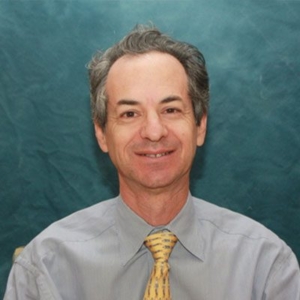
Gerry Lipshutz
Research Interests
Our research focuses on the development of gene and cell-based therapies for the treatment of metabolic diseases of the liver that commonly result in the development of intellectual disabilities in children. We have four active research directions:
- Development of gene-based (adeno-associated virus, mRNA) therapies to restore nitrogen metabolism, ureagenesis, and creatine biosynthesis.
- Exploring the underlying neurobiology in arginase deficiency and in guanidinoacetate methyltransferase deficiency to gain a greater understanding of the neuropathology that exists in these enzyme deficiencies.
- Developing new therapeutic approaches to treating deficiency of carbamoyl phosphate synthetase 1.
- Understanding the effect of guanidinoacetate on GABA-A receptors in guanidinoacetate methyltransferase deficiency.

Jeff Long
Research Interests
The Jeff Long Lab at UCLA is a state of the art plant lab that specializes in studying the embryonic development of the Thale Kress Arabidopsis Thaliana. Development of a plant from a seed is a complex process that involves thousands of proteins. At the Long lab, we study these proteins extensively.

Joe Loo
Research Interests
The Loo research group focuses on the development of bioanalytical mass spectrometry (MS) methods for the structural characterization of peptides and proteins and the application of MS for proteomics and disease biomarkers. Research projects include: development of novel modes of electrospray ionization and matrix-assisted laser desorption ionization for applicability to structural biology and proteomics; mass spectrometry and ion mobility analysis of noncovalently-bound macromolecular complexes and their interactions with other binding partners and ligands; gas phase protein structures and the relationship to their solution phase counterparts; development of separation and MS-sequencing tools for large-scale proteome profiling; top-down protein mass spectrometry; elucidation of protein complexes, interactions, and post-translational modifications found in complex, biological systems; discovering protein markers of human diseases; MS-based characterization of protein aggregation and its role in neurodegenerative diseases.
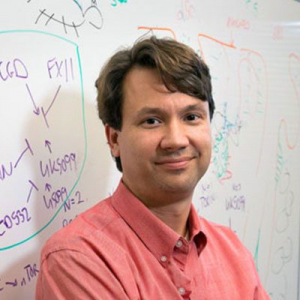
William Lowry
Research Interests
Specification, Maintenance and Dysplasia of Epidermis The process by which cell fates are adopted and maintained in organisms has preoccupied much of biological investigation for a century. We seek to uncover the mechanisms by which cells interpret signals during development or in mature tissue and generate a response leading to cell fate specification, regulation of self-renewal and differentiation, or even aberrant proliferation. The epidermis and nervous system are derivatives of progenitors specified in embryonic ectoderm. While the study of lower organisms has elucidated aspects of this specification, there is still a great deal unknown with regards to cell fate decisions in mammalian ectoderm, particularly human. We have devised an experimental paradigm that allows for the isolation and molecular characterization of cells in a model of human ectodermal development. We expect to find both familiar and unfamiliar pathways related to these specification events, and that some of these pathways will be used again to maintain stem cells in mature epidermis. We are using both in vitro and in vivo models to study epidermal adult stem cell self-renewal and differentiation to confirm this hypothesis and to uncover novel mechanisms. Some of these pathways that regulate self-renewal and differentiation are also thought to be defective in degenerative or dysplastic diseases. Using a murine model for tumorigenesis in the epidermis, we employ powerful new technology to describe the molecular landscape underlying tumor initiation by stem cells, including whether misregulation of self-renewal and differentiation pathways plays a role in cancer.
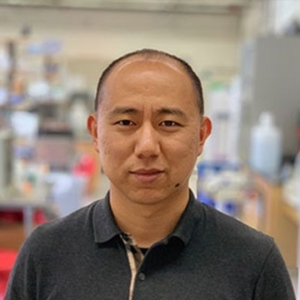
Chongyuan Luo
Research Interests
We are interested in studying how gene regulatory mechanisms contribute to human diseases including neurodevelopmental disorders. Many genome-wide association studies (GWAS) of diseases have identified the enrichment of non-coding risk variants in regulatory elements such as enhancers, highlighting the contribution of regulatory mechanisms to complex traits. In addition, epigenetic variants, such as cytosine methylation (5mC), have been reported to associate with diseases and can be driven by genetic, environmental or stochastic factors. We are developing and applying new genomic and genetic technologies to address long-standing questions in human diseases including the causal cell type(s) of diseases and the functions of non-coding genetic variants. Two major areas of research in my group are described below.
Developing new epigenomic technologies: Genomic profiling of epigenomic signatures (e.g. DNA methylation, histone modifications) enables the study of gene regulatory events on a global scale. In previous work, we have developed single-cell epigenomic and multi-omic technologies, and use these methods to study the gene regulatory diversity in the brain. We developed a high-throughput single-cell methylome profiling method snmC-seq and its major update snmC-seq2 that have enabled cell-type classification and the identification of cell-type-specific regulatory elements across cortical neuron subtypes in mouse and human (Luo et al., 2017. Science; Luo et al., 2018. Nature Communications). More recently we have developed two single-cell multi-omic methods that allow the multi-modal integration of transcriptome, DNA methylome, chromatin accessibility and chromatin conformation (Luo et al., 2018. bioRxiv; Lee*, Luo*, Zhou* et al., 2019. Nature Methods), providing a near-comprehensive epigenomic characterization of individual brain cells.
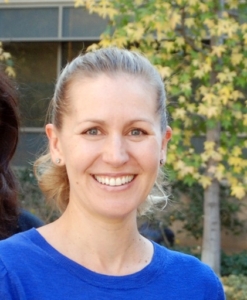
Julia Mack
Research Interests
The Mack Lab studies the mechanisms of endothelial mechanotransduction in the context of vascular health and disease. We study how blood flow forces influence vascular response- both at the single cell and tissue level. We are interested in the heterogeneity of cellular response within a “homogeneous” monolayer of cells. To visualize the heterogeneity of response, we utilize high resolution live cell imaging and atomic force microscopy to quantify the dynamics of Ca2+ oscillations, measure flow induced plasma membrane properties and determine the localization of proteins at the subcellular level. In addition, we use molecular biology techniques to ascertain features of endothelial function such as cell polarity, protein distribution and gene expression in response to various stimuli.
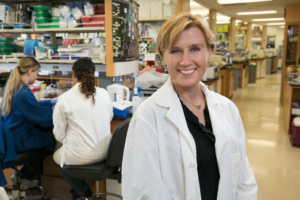
Hanna Mikkola
Research Interests
Dr. Mikkola studies hematopoietic, or blood stem cells, which can self-renew and create all blood and immune cell types through a process called differentiation. Mikkola is identifying how proteins and other cellular cues affect blood stem cells during embryonic development and differentiation. Her goal is to enhance the understanding of these processes in order to efficiently and effectively generate blood stem cells in the lab. Mikkola’s lab uses genetically modified mouse models as well as mouse and human pluripotent stem cells to study blood stem cell development and differentiation. Another major focus in Mikkola’s lab is determining what makes human blood stem cells capable of self-renewing without losing their differentiation potential.

Robert Modlin
Research Interests
Infectious disease poses a major health problem worldwide. Essential to control of these diseases is the elucidation of mechanisms by which the innate and adaptive immune systems defend against microbial pathogens. We have investigated human immune responses in the context of two major human infectious diseases, leprosy and tuberculosis. Our studies provided new paradigms for human innate immune responses including the first evidence that Toll-like receptors recognize microbial lipoproteins and can activate macrophages to kill intracellular pathogens. Our work revealed that humans and mice have evolved distinct antimicrobial pathways in their innate immune systems, and demonstrated a novel vitamin D-dependent pathway in human macrophages that generates antimicrobial peptides, e.g. cathelicidin, that kill intracellular pathogens, including M. tuberculosis. Macrophage antimicrobial and phagocytic programs were shown to be differentially programmed by the innate system via IL-15 and IL-10 respectively, which impact the outcome of microbial infection. Our lab has also described new paradigms for human acquired immunity by demonstrating: distinct Th1 and Th2 cytokine patterns in disease lesions of different clinical forms of human leprosy; similar utilization of the common vitamin D-dependent and antimicrobial peptide pathway, and differential regulation of this activity by different cytokines. Since vitamin D is synthesized in response to UV light, these studies have provided novel insights into the known differential susceptibility to microbial pathogens of humans of African and Asian descent and suggested new approaches to translational intervention to enhance immunity. These discoveries were made through study of human leprosy and tuberculosis, ancient diseases caused by intracellular pathogens that still pose major health and economic burdens to developing countries.
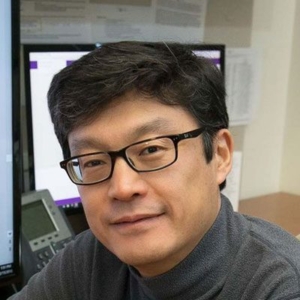
Austin Nakano
Research Interests
The mammalian heart is a complex multi-chambered pump. The proper function of the heart requires highly coordinated process of differentiation and integration of each cellular component. Through the continuing evolutionary selection the cardiac morphogenesis process has been modified and fine tuned to eventually make the miracle of mammalian cardiogenesis. For more than three decades, researchers have been studying how artistic and miraculous this morphogenesis event is. The recent advances in forward and reverse molecular genetics have added a new dimension to the understanding of the cardiogenesis – as represented by discoveries of key transcription factors and diverse cell lineages contributing to the formation of the heart, the developmental biology of the heart has had a great progress over the past decade. However, our understanding of how a highly diverse and specialized subset of heart cell lineages arises from mesodermal precursors and subsequently is assembled into distinct muscle chambers, coronary arterial tree and large vessels, valvular tissue, and conduction system/pacemaker cells remains at a relatively primitive stage. The overall goal of our research is to understand the art of the cardiogenesis from stem cell perspective and uncover the fundamental mechanism of heart formation that cannot be answered simply by molecules and morphology. The key questions we would like to address are; (1) How the commitment and diversification of the cardiac cells is regulated at each level of cardiogenesis (2) How plastic the heart cells are and what is the biological significance of the plasticity during cardiac morphogenesis and disease development (3) What is the molecular mechanism that makes the adult cardiomyocytes terminally differentiated and unable to divide.
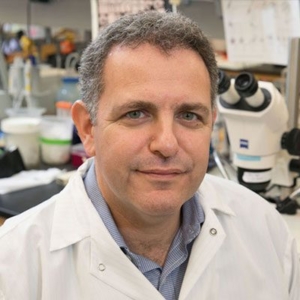
Ben Novitch
Research Interests
The primary goal of my laboratory’s research is to determine the molecular pathways that direct the differentiation of neural stem and progenitor cells (NPCs) and the assembly of neural circuits, particularly those that control motor functions such as locomotion and breathing. To achieve this goal, we focus on identifying the growth factor signals, transcriptional networks, and downstream effectors that control the formation of neurons and glial cells in the spinal cord and brain. Insights into these fundamental mechanisms are essential for determining the function of NPCs in both normal development and diseased states, and for developing new methods to manipulate NPCs to facilitate the repair of damaged neural tissues.

Tim O'Sullivan
Research Interests
Our research is dedicated to understanding the molecular mechanisms responsible for protective or pathologic immune responses during cancer, viral infection, and obesity. We will exploit this knowledge to design effective therapeutic strategies with potential clinical applications for type II diabetes and cancer. Our research program is composed of three major directions:
1. Mechanisms of immune surveillance and immune escape in cancer
Our research goal is to dissect the cellular and molecular mechanisms that control tissue-resident and circulating innate immunosurveillance and tumor escape. Our previous work demonstrated that the innate immune system could protect mice from tumor development (O’Sullivan et al., J Exp Med 2012).
We are interested in the following questions:
-How are tissue-resident immune cells activated by developing cancer?
-How are circulating Natural Killer (NK) cells recruited into the tumor microenvironment?
-What are the molecular and cellular mechanisms that lead to NK cell dysfunction in the tumor microenvironment?
2. Mechanisms of adipose tissue inflammation and insulin resistance during diet-induced obesity
Our research was the first to identify protective and pathologic roles for tissue-resident type 1 innate lymphoid cells (ILC1) during viral infection, liver injury, and obesity (O’Sullivan et al., Immunity 2016; Weizman et al., Cell 2017; Nabekura et al., Immunity 2019).
We are interested in the following questions:
-What is the complete cellular composition of mammalian adipose tissue?
-How do cells interact in the adipose tissue micronevironment during homeostasis and obesity?
-What causes adipose tissue inflammation during obesity?
3. ILC responses to viral infection and generation of immunological memory
The innate immune system was previously considered to be composed of short-lived cells that perform effector functions during infection and then rapidly die once their task is accomplished. However, our studies and others suggest that ILCs posses characteristics of the adaptive immune system, such as clonal expansion, longevity, and immunological memory (O’Sullivan et al., Immunity 2015; Weizman et al., Nature Immunology 2019)
We are interested in the following questions:
-What are the transcriptional and epigenetic mechanisms that control memory cell formation?
-How do effector lymphocytes survive to form memory cells?
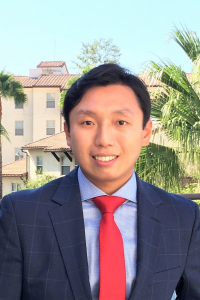
Jun Park
Research Interests
One of the most remarkable features of living systems is their metabolism. Within each cell, metabolism serves as a microscopic chemical plant with flexible input substrates and defined output products. This network of biochemical reactions is essential for biotechnology and implicated in diseases, yet it is still a great mystery. We use state-of-the-art mass spectrometry and cleverly designed isotope tracers to visualize metabolic pathways in action. Integrating the kinetic and thermodynamic dimensions of metabolic networks, we discover a fundamental design principle – metabolite concentrations and free energies (ΔG) that favor efficient enzyme usage are a conserved feature of metabolism across widely divergent organisms. This fundamental understanding provides the basis for addressing energy and environmental issues. We have devised a carbon dioxide-fixing energy storage strategy that emerges in the uncharted metabolic landscape of mixed substrates. In this regime, metabolic pathways can be tailored to optimize the conversion of CO2 and H2 into lipids through fewer enzymatic steps. The observed systems-level efficiency is consistent with an evolutionary drive to optimize utilization of available cellular resources and can be tamed for successful applications in biotechnology and medicine.

Chao Peng
Research Interests
Peng lab focuses on the molecular and cellular mechanisms of alpha-synuclein and tau related neurodegenerative diseases including but not limited to Parkinson’s disease, Alzheimer’s disease and multiple system atrophy. We develop cutting edge disease models and applies powerful genetic, multi-omics, structural and high through-put screen methods to investigate a wide range of topics related to the development and progression of this group of diseases. We are particularly interested in the transmission and conformational diversity of pathological proteins in the central nervous system and the role of neuron-glial interactions in this process.
1. Transmission mechanism of pathological protein in the central nervous system
Accumulating evidence supports the inter-cellular transmission and subsequent amplification of pathological proteins in the central nervous system as a key process for the progression of various neurodegenerative disease. We are interested in exploring the molecular mechanisms that modulate this transmission process, which could be exciting new drug targets for these diseases.
2. Conformational diversity of pathological proteins.
Clinical and pathological diversity is a shared feature of various neurodegenerative diseases. Part of this diversity could result from the conformational diversity of pathological proteins underlying the diseases. For example, pathological alpha-synuclein in multiple system atrophy patients are a thousand fold more potent to induce alpha-synuclein pathology in various animal and cell model than those from Lewy body disease patients, which is consistent with the highly aggressive nature of multiple system atrophy. We would like to explore the conformational diversity of pathological proteins in diseased brains.
3. Interaction between neurons and glial cells
Neurons and glial cells forms integrated network in the central nervous system. We are interested in how pathological proteins could transmit among glial cells and between neurons and glial cells.
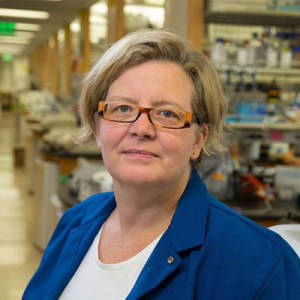
Kathrin Plath
Research Interests
The Plath lab aims to understand molecular mechanisms that control genome organization, chromatin states, and gene expression during cell fate changes, with a particular focus on the pluripotent state and pluripotent stem cells, the differentiation of pluripotent stem cells, and reprogramming of somatic cells to pluripotent stem cells. Our team of experimental and computational biologists uses embryonic stem cell (ESC) and induced pluripotent stem cell (iPSC) model systems, state-of-the-art microscopy, biochemistry and mass spectrometry, high throughput screening approaches, gene editing and transgenic/knockout mouse models, genomic approaches (to map patterns of RNA expression at the single cell and population level, open chromatin, DNA methylation, histone modifications, transcription factor binding, three dimensional genome organization, RNA-protein and RNA-chromatin interactions), and computational modelling.

Pearl Quijada
Research Interests
Organization of an integrated coronary vasculature requires the specification of immature endothelial cells (EC) into arterial and venous fates based upon their localization within the heart. However, it is not clear how spatial information controls EC identity and behavior. Here, we used single-cell RNA sequencing at key developmental timepoints to interrogate cellular contributions to coronary vessel patterning and maturation. We found that epithelial-tomesenchymal transition (EMT) generates populations of epicardium-derived cells (EPDCs) with unique chemokine signatures. In addition to controlling cell adhesion and the motile gene program, EMT is directly responsible for restricting the expression of individual chemokines to distinct epicardial cell-types. Receptor-ligand analyses identified important nodal points within the EPDC-EC interactome that depend upon epicardial EMT. Genetic disruption of EMT alters intercellular signaling programs, and precipitates the emergence of an immature arterial EC state that accumulates near the epicardial surface. Importantly, we found that EC fate is controlled by the same molecules that govern cell movement. These findings establish a novel mechanism linking EC localization and fate specification in the developing heart. Future research will focus on the study of fetal angiogenic cues to promote angiogenesis and cardiac repair during ischemic heart disease.

Margot Quinlan
Research Interests
We are using biochemistry, microscopy and genetic approaches to study dynamics of the actin cytoskeleton. We are currently focusing on Spire and Cappuccino, two proteins that collaborate to build an actin network essential for early body axis development in Drosophila. Combining an in vitro understanding of the mechanism of Spir and Capu with in vivo studies of oogenesis will provide insight into how the actin cytoskeleton is regulated and a broader understanding of cell polarity. In the Quinlan lab we are addressing four questions:
Molecular Mechanism: How do Spir and Capu collaborate?
Cell Biology: What role does the Spir-Capu complex play in Drosophila oogenesis?
Regulation: How is the Spir-Capu complex regulated?
Mammalian Disease: Is the Spir-Capu complex a polarity factor in other cell types?

Alvaro Sagasti
Research Interests
Morphogenesis is the process by which cells adopt their specific shapes, sizes, and relationships with neighboring cells. Our lab studies the morphogenesis of developing skin cells and sensory neurons, which together mediate touch sensation. The skin at early developmental stages consists of two epithelial layers, each with distinct functions and morphologies. Sensory neurons project elaborately branched cellular processes called peripheral axons into the territory between the two skin layers to detect touch stimuli. We investigate how each of these cell types adopts its distinct morphological features and how skin cells and neurons influence each other’s morphogenesis. To study these questions we use zebrafish embryos and larvae as a model. Because zebrafish eggs are externally fertilized and their embryos are optically clear, cellular behaviors can be imaged in live animals. Transgenic lines allow us to visualize specific cells and subcellular processes, laser-based techniques allow us to damage cells at precise times and places to study repair, and genetic manipulations provide insight into the molecular underpinnings of cellular behaviors. By studying basic cellular processes we hope to shed light on how they are impacted by damage and disease.
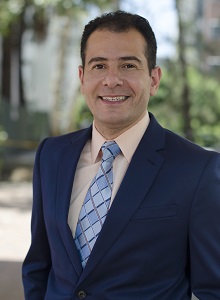
Tamer Sallam
Research Interests
Inspired by common real-world mysteries and taking a “gene regulation centric” approach, our lab investigates the physiology and mechanisms of Regulatory RNAs in cardiometabolic diseases. Our efforts focus on several key areas: contribution of noncoding RNAs and their binding partners in metabolism and atherosclerosis, epigenetic and transcriptional control mechanisms in metabolism, epitranscriptomics in metabolic regulation, and genetic basis of extreme lipid traits.
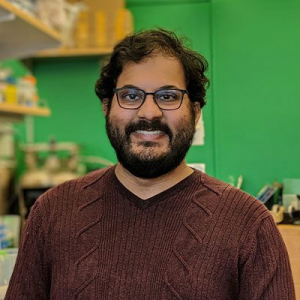
Pavak Shah
Research Interests
Research in the Shah Lab concerns the mechanisms by which neuronal function emerges and is refined during embryonic development. Using the nematode C. elegans as a model, the lab employs a combination of classical genetics and modern microscopy methods in understanding how functional circuits emerge and are patterned. The lab is active in developing novel approaches to single cell analysis in vivo through the integration of advanced light microscopes with computer vision and machine learning systems to guide single cell-resolution perturbations.

Claudio Scafoglio
Research Interests
My research program started from the observation that the modality of glucose transport evolves during the process of cancer development. Our studies in lung cancer showed that pre-malignant and early-stage lesions utilize sodium-dependent transporters (SGLTs) to take up glucose from the environment, whereas advanced and poorly differentiated tumors switch to transporters of the GLUT family. Our current research aims at answering the following questions:
– Why do cancer cells need to change their glucose transport system as tumors progress?
– Are there metabolic differences between SGLT- and GLUT-dependent cells?
– What regulates SGLT and GLUT expression in different disease grades and stages?
– What is the relationship between glucose transport system and cellular differentiation?
– What are the consequences of SGLT2 knockout or pharmacological blockade on the progression from pre-malignant lesions to invasive cancer, including effects on cellular epigenetics, on the microenvironment, and on the tumor-specific immune response?
To answer these questions, we are using a variety of experimental models, including monolayer and 3D cell culture, genetically engineered mouse models, patient-derived xenografts, and chorioallantoic membrane assays. We employ a variety of experimental methods, from molecular biology to metabolic analyses, imaging, and whole genome studies.

Philip Scumpia
Research Interests
The Scumpia Lab investigates how the cutaneous immune system affects wound healing and/or scarring, infection, and skin cancer. A major focus is to develop immunomodulatory biomaterials for wound healing, cutaneous regeneration, vaccines, and cancer immunotherapies.
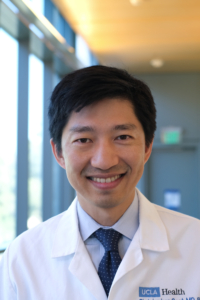
Chris Seet
Research Interests
The Seet Laboratory is focused on the study of human lymphocyte development and function and its application to tumor immunology and cancer immunotherapy. The Lab seeks to broadly understand how T cell development from stem and progenitor cells can be directed to enhance T cell function and anti-tumor efficacy, with a focus on developing new approaches to immune cell therapy for cancer. Current projects include the in vitro generation of tumor antigen-specific TCRs, characterization of novel receptor pathways in T cell-tumor cell interactions, and modification of in vitro T cell differentiation to generate T cells with enhanced in vivo anti-tumor potential from pluripotent stem cells. The Lab is particularly interested in the development of immunotherapeutic approaches to treat hematologic malignancies, Dr. Seet’s clinical subspecialty. The Seet Lab incorporates methods in molecular and cell biology and immunology including lentiviral gene delivery, gene editing, single-cell RNA-seq and TCR sequencing, flow cytometry, human immune cell functional assays, and in vivo modeling of human immune cell function in tumor xenograft models. The Lab fosters a highly collaborative environment for trainees at all levels to pursue scientific investigation with an emphasis on creativity, innovation, and clinical significance.

Stephen Smale
Research Interests
The research in our laboratory is diverse and revolves around our interests in gene regulation, molecular immunology, stem cell biology, and oncogenesis/leukemogenesis. One major area of interest is the molecular mechanisms of pro-inflammatory gene regulation, with an emphasis on transcriptional cascades induced by inflammatory stimuli and the contributions of chromatin structure to the selective regulation of pro-inflammatory genes. A second interest is the selective functions of the five members of the NF-κB family of transcription factors. We also study the mechanisms by which Ikaros family proteins regulate lymphocyte development and leukemogenesis, and the mechanisms by which developmentally regulated genes acquire competence for transcriptional activation in embryonic stem cells and induced pluripotent stem cells.
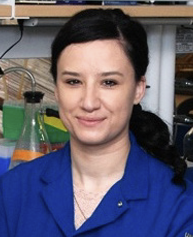
Alice Soragni
Research Interests
We develop strategies to test drugs in 3D tumor organoid models in a fast, reliable, high-throughput, inexpensive manner. Requiring few tumor cells, we aim to extend our methods to test combination of chemotherapies or targeted therapies directly on primary tumors from patients’ biopsies or surgical samples in order to personalize treatment.
Our most current work is focused on sarcoma, ovarian cancer, neuroendocrine tumors as well as neurofibromas.
We are investigating the role of p53 aggregation in cancer onset and progression. We exploit p53 aggregation for therapeutic intervention using peptide drugs, and are testing combinatorial regimens with traditional chemotherapy and other targeted agents. In addition, we are studying the role of protein aggregation in cancer more broadly, by identifying which proteins misfold and accumulate in different cancers, in which conditions this happens and design therapeutic peptides to target them for cancer therapy.

Melissa Spencer
Research Interests
Melissa Spencer, Ph.D., studies the biological causes of genetically inherited muscular dystrophies in order to identify novel treatments and improve quality of life for patients. Spencer takes a multidisciplinary approach to her work to gain insights into how muscular dystrophies relate to the body’s natural processes and ensure that findings will be translatable from animal models to humans.
One area of focus in Spencer’s lab is Duchenne muscular dystrophy, which affects approximately 1 in 5,000 boys in the U.S. and is the most common fatal childhood genetic disease. Duchenne occurs through mutations in a gene that produces dystrophin, a protein that helps strengthen and connect muscle fibers. Duchenne mutations cause abnormally low production of the dystrophin protein, which in turn causes muscles to degenerate and become progressively weaker.
Spencer is particularly interested in how the immune system’s natural muscle repair processes go awry in patients with Duchenne, exacerbating disease symptoms. In patients without Duchenne, the immune system plays a key role in repairing injured muscle throughout life. Duchenne causes muscle weakness and degeneration, sending the immune response process into overdrive. Constant wound repair leads to inflammation, which causes muscle tissue to scar and thicken, ultimately limiting muscle function. Spencer has focused on studying the components of the immune system involved in this process in order to identify cellular or protein targets for therapies that rein in abnormal immune response. This work has led to the identification of a drug that is currently being evaluated in preclinical studies.
Spencer is simultaneously investigating another potential therapeutic avenue to treat Duchenne. In collaboration with stem cell center colleagues, Spencer developed an approach that uses the stem cell gene editing platform CRISPR/Cas9 to correct the genetic mutations that cause Duchenne. She and her collaborators are now working on identifying novel delivery methods such as nanotechnologies that could bring this promising therapy to patients with minimal side effects.
Spencer is also collaborating on the development of a drug to treat limb girdle muscular dystrophy type 2A, also known as primary calpainopathy, a genetic disease characterized by progressive weakness in the limb and shoulder girdle muscles, mainly those around the hips and shoulders. This drug is currently being evaluated in animal models.

Maureen Su
Research Interests
Our group is broadly interested in in understanding what causes autoimmune disease in order to develop targeted therapies for these conditions. Using insight gained from studying autoimmune disease, we are also interested in developing therapies that enhance anti-cancer immunity.
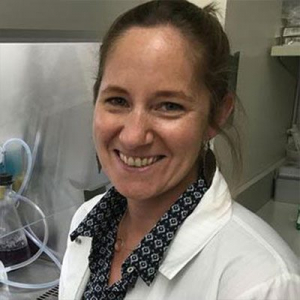
Elizabeth Tarling
Research Interests
Lipids (particularly cholesterol and phospholipids) are essential components of cell membranes and are precursors to many signaling molecules, including steroid hormones, bile acids and oxysterols. As such, lipid synthesis pathways are among the most intensely regulated processes in biology. We are interested in understanding molecular mechanisms that control cellular, tissue and whole-body lipid homeostasis in healthy and disease states.
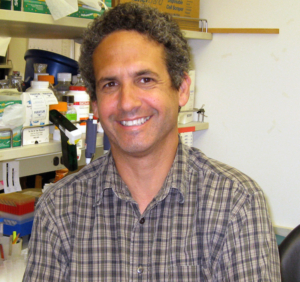
Michael Teitell
Research Interests
My laboratory studies two overlapping areas with emerging roles in cancer of the immune system. We initially compared gene expression profiles from B cell tumors that arose in immune deficient versus immune competent settings. This approach resulted in the isolation of a large number of differentially expressed genes. We have characterized these isolates and focused on members of the TCL1 gene family, which act like rheostats to control the strength of transduced environmental signals and to regulate gene expression. We have determined that TCL1 promotes cell survival and proliferation by modulating the Akt signaling pathway and probably by interacting with a mRNA degrading enzyme. During normal lymphocyte differentiation, TCL1 is down regulated and shut off; however, in many lymphoid cancers, TCL1 levels remain aberrantly high suggesting a tumorigenic role. We have generated TCL1 transgenic mice that develop lymphoma, establishing this principle. Further characterization indicates that these transgenic mice are the first to accurately model the vast majority of B cell cancers that arise in humans, which has been a major goal in hematology/oncology research for years. Current lab studies include understanding how TCL1 dysregulation contributes to tumor formation through the regulation of Akt and mRNA stability and comparative investigations of additional TCL1 family member proteins. A failure to properly execute developmental gene expression programs can be due to many causes and also leads to cancer. In studies linked to TCL1 gene regulation, we have discovered a novel type of DNA methylation that has a role in altering chromatin structure and gene expression. Methylation of the internal cytosine in CCWGG motifs (W = A or T) causes the silencing of critical genes, such as the p53 tumor suppressor. Current lab studies include broadening studies of epigenetic regulation and its significance in lymphocyte development and neoplasia.
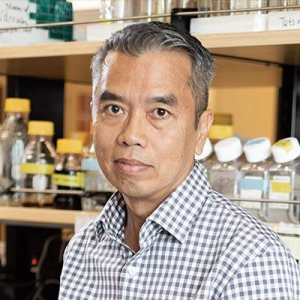
Hung Ton-That
Research Interests
The laboratory primarily focuses on three major areas of research, aiming to elucidate the molecular mechanisms of pathogenicity by Gram-negative and Gram-positive pathogens. In addition, we are collaborating with Dr. Robert Clubb’s lab (MBI, UCLA) to develop assays for protein ligation technology and for discovery of small molecules that disrupt the attachment of virulence factors to the Gram-positive bacterial cell wall. We employ a multidisciplinary approach combining classical and modern techniques that include genetics, various biochemical methods, electron microscopy, electron cryo-tomography, X-ray crystallography, biophysics, mass spectrometry, cell-based assays, and rodent models of infection.
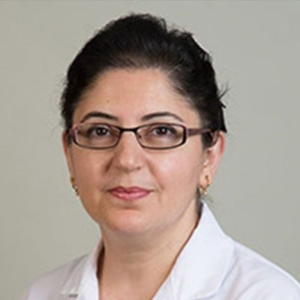
Marlin Touma
Research Interests
Our mission in the Neonatal/Congenital Heart Laboratory is to fill important gaps of current knowledge and address unmet needs towards precision child health cardiovascular medicine. Starting with important clinical observation, we test our questions in the laboratory, equipped with state-of-the-art molecular genetics tools and disease models, including mouse, zebrafish and cell model systems. Ultimately, the outcome of our studies will pave the way to novel knowledge, new preventive strategies and improved therapies for the newborn infants with Congenital Heart Defects.

Thomas Vondriska
Research Interests
The Vondriska Lab at UCLA investigates epigenomic mechanisms of cardiovascular disease. Our systems biology approach marshals genomic, epigenomic and proteomic discovery tools to examine animal models and human populations. Data science and network biology play important roles in our holistic studies of cardiovascular health. Our mission is to discover the basic principles of chromatin biology as well as to understand the causes of cardiovascular disease–to aid in the development of new therapies and cures.
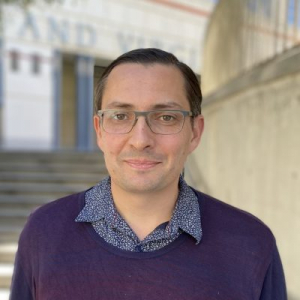
Thomas Vallim
Research Interests
During a normal day, our body undergoes many changes in metabolism, which requires rapid adaptation to different conditions. For example, after a meal, our cells transition from seeing minimal levels of nutrients such as glucose or lipids, to suddenly having a large influx of these metabolites. These cells have to rapidly adapt to these large environmental changes to maximize their ability to take up, utilize, or store these metabolites for survival. Failure to adapt to these changes is linked to many metabolic diseases, such as obesity and fatty liver. Our lab is interested in discovering novel molecular mechanisms that regulate adaptive metabolic processes using a combination of big-data, physiology, genetics, and biochemistry. So…we like to hunt for genes, and find a new function to them!
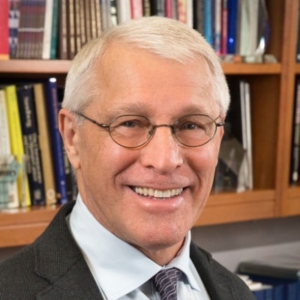
Owen Witte
Research Interests
My group has made significant contributions to the understanding of human leukemias, immune disorders, and epithelial cancers. This includes the discovery of tyrosine kinase activity for the ABL gene and the demonstration of the BCR-ABL oncoproteins in human leukemias. This has had practical impact in leading to the development of kinase targeted therapy as an effective treatment for these leukemias and other cancers. Our work also led to the co-discovery of Bruton’s tyrosine kinase which is required for normal B-lymphocyte development, and when mutated leads to X-linked agammaglobulinemia, a form of immune deficiency. New targeted inhibitors for this kinase are of value in treating several types of lymphoma and leukemia. More recent work has concentrated on defining the stem cells and growth regulatory pathways for epithelial cancers of the prostate and other organ sites to help define new types of therapy for these diseases. We have a special interest in developing new immunotherapy targets for these diseases. We also develop new probes and methods for whole body imaging techniques using Positron Emission Tomography (PET) to monitor cancer growth and cellular immune functions.

James Wohlschlegel
Research Interests
Signaling networks have emerged as the underlying regulatory system by which the many biological pathways required for sustaining life are coordinated. My laboratory uses a combination of biochemistry and proteomic mass spectrometry to understand the signaling networks mediated by the ubiquitin family of small protein modifications. Specifically, we are examining the role of two members of this family, ubiquitin and SUMO, in regulating key nuclear processes. Importantly, the deregulation of these two modification systems has been linked to the pathogenesis of many diseases including cancer, neurodegenerative diseases, and immune system disorders. Ubiquitin is a 76 amino acid protein that regulates the abundance and activity of a large number of cellular factors through its covalent attachment to lysines in target proteins. The specificity of this modification system is generated by a large family of ubiquitin ligases, each of which target a specific set of substrates for modification. We are currently characterizing a subset of these ubiquitin ligases that have been implicated in tumorigenesis. Using a combination of proteomic and biochemical tools, we are identifying the substrates of these ligases and working to understand how altering the modification state of these substrates can influence tumor progression. SUMO is another member of the ubiquitin family of small protein modifiers that plays a critical regulatory role in a number of different biological processes. We previously developed a series of proteomic tools that enabled us to characterize different aspects of this signaling pathway. These findings form the basis for ongoing work in my laboratory aimed at understanding how SUMO-regulated protein networks influence chromatin structure, cell cycle progression and genome stability and how misregulation of this pathway can play a critical role in tumorigenesis.

Gerard Wong
Research Interests
Dr. Wong is interested in a multi-disciplinary approach to solving problems in biology and biomedicine., combining physics, chemistry, biology, and engineering. The group is inherently interdisciplinary; our collaborations include physicists, chemists, material scientists, biologists, medical doctors, and bioengineers. Areas of research include:
- Innate immunity (control of immune system, autoimmune diseases, cancer immunotherapy)
- Antimicrobials and antibiotic-resistant pathogens
- Bacterial communities (Ex: signaling, motility, social organization in biofilms)
- Cystic Fibrosis
- Apoptosis proteins and cancer therapeutics
- Disinfection and water purification
- Self-assembly in biology and biotechnology (Ex: drug and gene delivery)
- Physical chemistry of solvation (Ex: femtosecond hydration dynamics of ions and surfaces)
- Soft condensed matter physics (Ex: polymers, polyelectrolytes, liquid crystals, colloids, nanoparticles)
- Biophysics (Ex: DNA, membranes, proteins)

Grace Xiao
Research Interests
With similar number of genes as in simpler organisms, mammals demonstrate an amazing degree of phenotypic diversity. Mammalian gene expression is under tight regulation temporally and spatially, which contributes to the formation of different cell types, tissues, and organs. Gene regulation involves a complex network of players, including multiple DNA, RNA sequence elements and RNA and protein factors. These regulators interact with each other and carry out combinatorial regulatory functions. Our lab uses both computational and experimental approaches to study the biology of gene regulation from a systems point of view. Our current focus pertains to the regulation of gene expression at the RNA level via the process of pre-mRNA splicing and other post-transcriptional (or co-transcriptional) mechanisms. Splicing is a critical step enabling diversity in gene expression programs. At least half of all human genes undergo alternative splicing which allows multiple gene products with potentially different functions to be produced from a single gene locus. We are currently investigating splicing regulatory mechanisms using comparative genomics, high-throughput technologies, such as deep sequencing and microarrays, and systems level computational analysis, such as system identification and modeling approaches. A long-term goal of our research is to better understand the involvement of splicing in gene expression programs of different disease models.

Xian-Jie Yang
Research Interests
The main interest of our lab is to understand the molecular and cellular mechanisms underlying development of the vertebrate central nervous system. We use the mouse and chicken retinas as models to study cell fate specification of neural progenitors during development. In addition, we study the maintenance and activation of the adult retinal stem cell niche under conditions that cause retinal degeneration. The mature retina is composed of seven major cell types that are generated from multipotent neural progenitors during neurogenesis. The cell fate choices of uncommitted neural progenitor cells are influenced by both cell-extrinsic cues and cell-intrinsic determinants. We are particularly interested in how extracellular signaling molecules regulate progenitor behaviors through key transcription factors that specify various retinal cell types. Our current studies center around several signaling molecules, including Sonic hedgehog (Shh), vascular endothelial growth factor (VEGF), and ciliary neurotrophic factor (CNTF). Functions of these signaling pathways in retinogenesis are investigated using molecular genetic approaches through tissue-specific gene knockout and knockdown, as well as viral and non-viral gene misexpression. The cell type-specific responses to different extracellular signals are analyzed at cellular and transcriptional levels both in vivo and in primary neuronal culture systems. The goal of these studies is to elucidate how neural progenitor cells integrate and respond to multiple environmental signals during formation of the light sensing retinal neural network. In addition to molecular mechanisms involved in normal neural development, we are investigating cell-cell signaling in the presumptive adult retinal stem cell niche. The roles of various signaling pathways in maintenance and activation of the intrinsic stem cell pool are addressed by molecular genetic analyses in vivo and also tested in neural stem cell cultures in vitro. The potential of signaling molecules in triggering endogenous stem cell amplification is also studied by viral vector-mediated gene delivery. Results from these investigations will enhance our abilities to harness the potential of neural stem cells as therapeutic tools in combating retinal degeneration.

X. William Yang
Research Interests

Yi Yin
Research Interests
Genomic DNA experiences various types of lesions that can potentially lead to double strand breaks (DSBs). Failure to resolve such insults correctly has implications in cancer. Homologous recombination (HR) is a major pathway for repairing DSBs. HR is essential 1) for life: null mutations in BRCA genes are embryonic lethal; 2) in meiosis, which is initiated by hundreds of DSBs; and 3) in tumorigenesis. The central vision of our lab is to build a fully probabilistic understanding of HR by developing high-throughput single-cell sequencing technologies. Given one’s genotype, our long term goal is to be able to predict: 1) which genome regions are fragile; 2) what (epi)genetic contexts regulate DNA breakage; 3) how mutations and expression levels of DNA repair genes affect repair processes; and 4) what consequences HR and resulting rearrangements have from a single cell to an individual.
The majority of HR events, however, occur between identical sister chromatids and is error-free. Unlike error-prone repair, HR is difficult to track by bulk whole-genome sequencing (WGS). For example, pan-cancer mutation signature studies read “scars” in the genome and by definition miss these error-free events. Rare spontaneous HR in development is even harder to analyze and thus its cell-type variation is poorly understood. The lack of high-throughput global assay for error-free HR hinders our understanding of DNA repair. We developed sci-L3 suite of singel-cell sequencing technologies, which enables linear amplification of single-cell genomes that scales to 1M cells and generalizes to multi-omics, including WGS, targeted-sequencing and DNA/RNA co-assay. Recently, we have expanded sci-L3 to Strand-seq, which provides the first high-throughput global assay for error-free HR.
Our lab will focus on developing a full-fledged HR mapping platform to characterize genome, tissue and evolutionary variation in mitotic HR rates and machinery, and to rapidly generate and test thousands of hypotheses in the space of mutants and/or genetic variants of DNA repair genes. We also aim to develop tools for studying HR in non-model organisms in a scalable manner. We are broadly interested in the following directions:
A. Genome-wide characterization of HR partner choice between homologs and sister chromatids;
B. Systematically investigate cell-type variation on DNA repair pathway usage;
C. Construct dense linkage maps in non-model organisms;
D. New DNA repair gene finding in unculturable microbes.
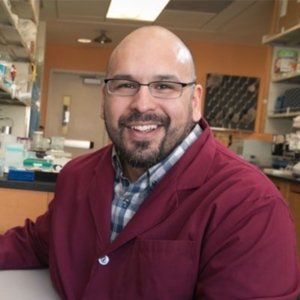
Jesse Zamudio
Research Interests
The Zamudio laboratory is interested in how RNA and RNA-binding proteins establish the gene expression programs that determine cellular identity. Using computational and molecular approaches, they aim to map RNA-mediated interactions and define their roles in normal human development and disease. Mechanistic insight into functional RNAs has illuminated multiple regulatory layers needed for normal cellular function and will continue to offer new pathways to target for the treatment of human diseases.

Ye Zhang
Research Interests
Glial cells constitute at least half of all cells in the human brain. Long thought to be passive support cells, glia are recently found to be critical for the development and function of the central nervous system. Accumulating evidence show that glia are involved in almost every type of neurological and psychiatric disorder. The cellular and molecular mechanisms that control glia development as well as dysfunction of glia in neurological and psychiatric disorders remains poorly understood. We combine cell culture and mouse genetic approaches to study glia biology in health and disease.

Jie Zheng
Research Interests
Our current research is at the interface of chemical biology, computational biology, structural biology, systems biology, and therapeutic development. To better understand the biological functions of different signaling pathways in the visual system and to explore the therapeutic potential of targeting abnormal signaling pathways. The current focus of our laboratory is structure-based drug discovery with an emphasis on developing proteins and small molecules that can systematically modulate signal transduction pathways. In an effort of translational research, our laboratory is also interested in structure-based drug repositioning.
Currently, the Wnt pathway is one of the focuses in our laboratory. Wnt signaling plays an essential role in embryonic development and regulation of cell growth. Inappropriate activation of the Wnt pathway has been shown to lead to different eye diseases, including glaucoma, degenerative retinal disorders, and corneal diseases. Aiming to develop potential novel pharmaceutical agents, we have taken a systems biology approach and are working on the development of small-molecule inhibitors that target different protein-protein interactions alone the Wnt signaling pathways.

Hong Zhou
Research Interests
Professor Hong Zhou’s lab focuses on 3D structural studies of biological complexes using cryo-electron microscopy (cryoEM) and cryo-electron tomography (cryoET). These emerging methods are particularly suitable for structure determination of large molecular complexes, viruses, cellular machineries and bacterial cells. Recent efforts have focuses on developing and applying advanced cryoEM and cryoET techniques to visualize the dynamic processes of microbial infections and to decipher the mechanisms of fundamental biological processes. Dr. Zhou’s group is at the forefront in pushing the envelope of cryoEM reconstruction to atomic resolution.

Zhenqi Zhou
Research Interests
My laboratory will explore the role of mitochondrial dynamics and quality control in metabolic health. Our molecular biology and mouse metabolic and physiology expertise has uniquely positioned me to address this question in mouse and cell-derived models. The research in my lab will initially focus on the following projects:
(1) Investigate the impacts of Parkin on adipose metabolism and obesity. Parkin, an E3 ubiquitin ligase, promotes selective degradation of impaired mitochondria via autophagy in mammalian cells. We will investigate the mechanisms of Parkin regulating mitochondrial function and adipose differentiation in vitro and in vivo.
(2) Characterize the role of Dj1 in regulating metabolic homeostasis, adiposity, and inflammation. Familial Parkinson’s disease arising from loss-of-function gene mutations in Park family members such as Dj1 (Park7) is associated with a wasting phenotype marked by muscle and adipose tissue mass reduction. Using adipose-specific loss- and gain-of-function mouse lines, we will separate the central versus peripheral action of Dj1 on metabolism and adiposity.
(3) Explore the impact of mitochondrial fission protein Drp1 on skeletal muscle metabolism and insulin action. Dynamin-related protein 1 (Drp1) is a primary mediator of mitochondrial fission, the process of dividing an individual mitochondrion into two organelles. Using muscle-specific Drp1 knockout mouse models, we will determine the effect of Drp1 expression in muscle metabolism and examine the role of Drp1 in regulating mitochondrial complex II activity. Together, these studies in my laboratory will uncover the underlying mechanisms of mitochondrial dynamics, quality control in metabolic syndrome progression and devise new approaches to prohibit obesity and T2D.








